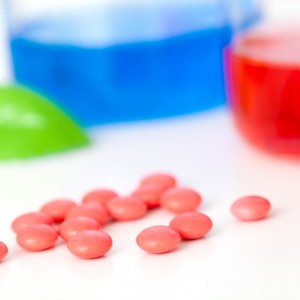 Very few cancer therapeutics are associated with a lack of adverse side effects. Crizotinib, a receptor tyrosine kinase inhibitor used to treat non-small cell lung cancer (NSCLC), is no exception. Treatment may lead to changes in the number of circulating blood cells, the levels of liver enzymes, and heartbeat parameters. Part of the reason why crizotinib causes adverse events may be the variable drug plasma concentrations achieved in patients of different gender and race.
Very few cancer therapeutics are associated with a lack of adverse side effects. Crizotinib, a receptor tyrosine kinase inhibitor used to treat non-small cell lung cancer (NSCLC), is no exception. Treatment may lead to changes in the number of circulating blood cells, the levels of liver enzymes, and heartbeat parameters. Part of the reason why crizotinib causes adverse events may be the variable drug plasma concentrations achieved in patients of different gender and race.
“Measuring crizotinib concentrations in the plasma of patients may be substantially beneficial for predicting adverse events and for defining the optimal dose of crizotinib,” wrote Dr. Yasuko Kurata, author of the article “Correlation of Plasma Crizotinib Trough Concentration with Adverse Events in Patients with Anaplastic Lymphoma Kinase Positive Non-Small Cell Lung Cancer,” which was published in Journal of Pharmaceutical Health Care and Sciences.
To test this hypothesis, Dr. Kurata, who is part of the Department of Pharmacy at Okayama University Hospital along with colleagues who contributed further to the study, analyzed the blood concentrations of crizotinib in nine patients with anaplastic lymphoma kinase-positive NSCLC. Samples were obtained two weeks after the start of treatment, and adverse events were monitored after one, two, three, and four weeks.
Interpreting the concentration of crizotinib in patients’ blood, low trough concentrations were three times less likely to develop adverse events than high trough concentrations. In fact, grade 3 or 4 adverse events were only experienced by patients with high trough concentrations. “The occurrence of several adverse events may correlate with the increase in the crizotinib trough concentration,” wrote Dr. Kurata. “Monitoring of the crizotinib trough concentration could predict the risk of development of several adverse events and provide guidance for determining the optimal dose of crizotinib.”
Although it seems patients with lower levels of crizotinib available in their bloodstream would not recover as well as those patients who show higher levels, patients in either grouping had achieved stable disease state after 4 weeks of treatment. Therefore, a lower dose may not necessarily lead to a lesser patient response. The current recommended dose of crizotinib is 250 mg taken orally twice daily, with a stable drug plasma level reached following two weeks of treatment.


